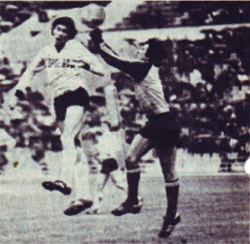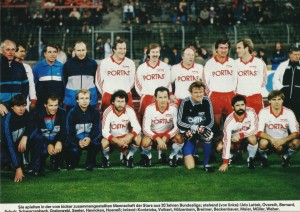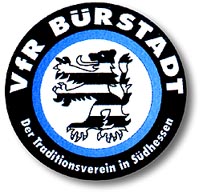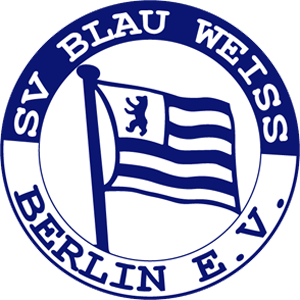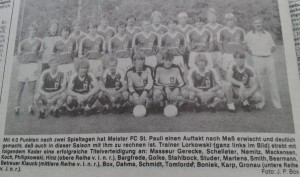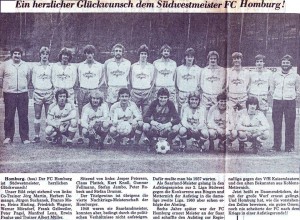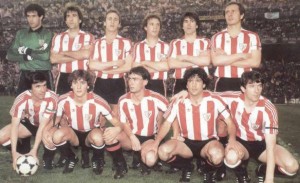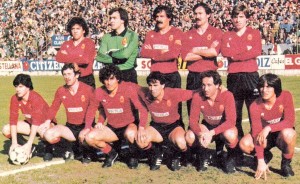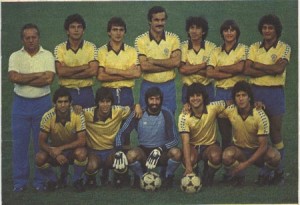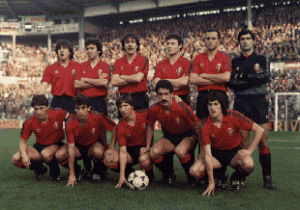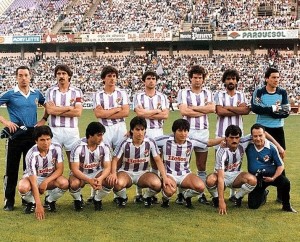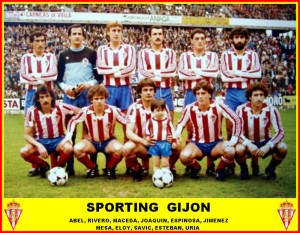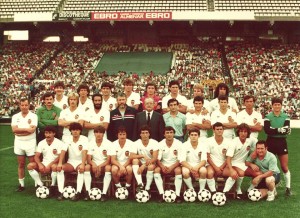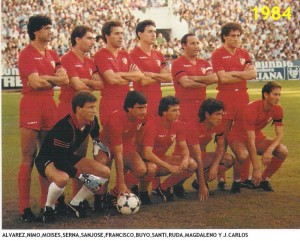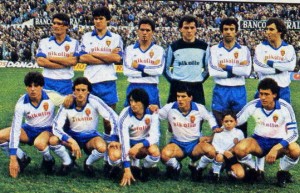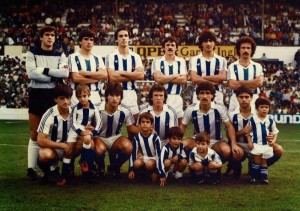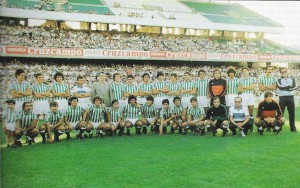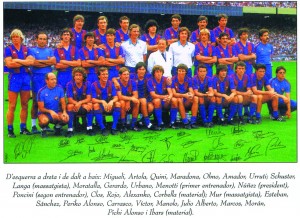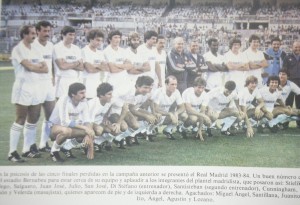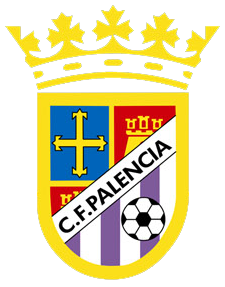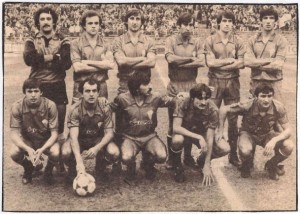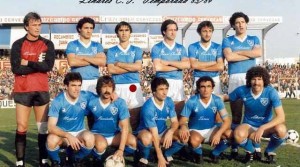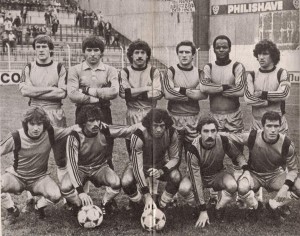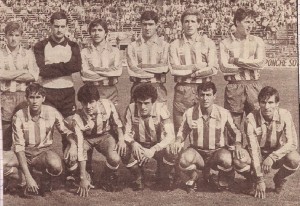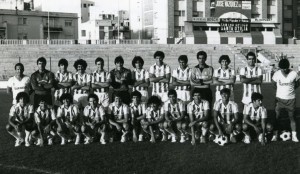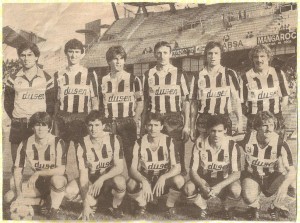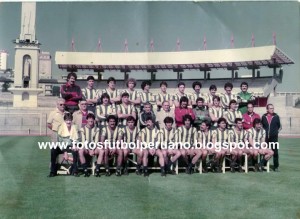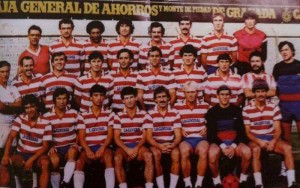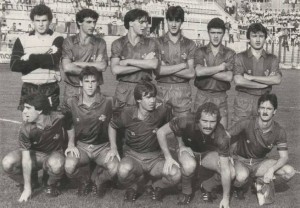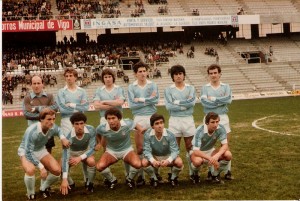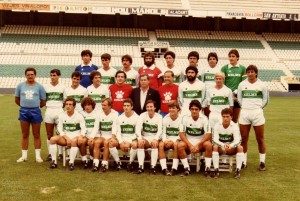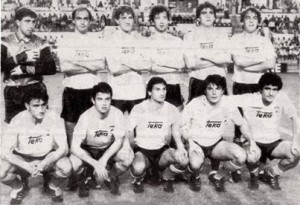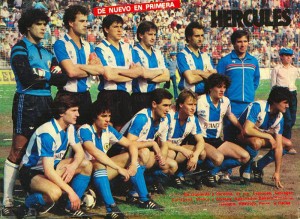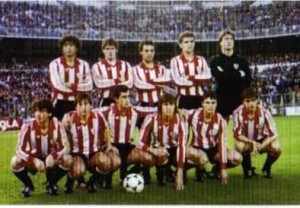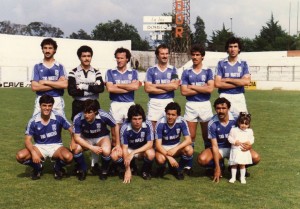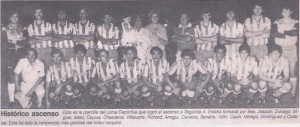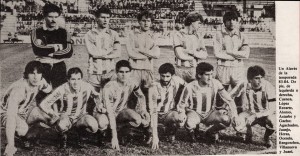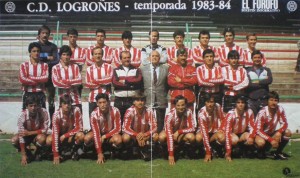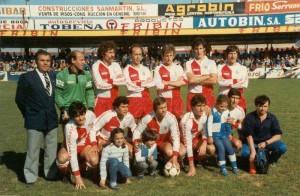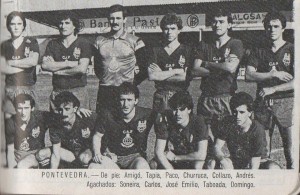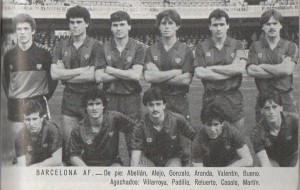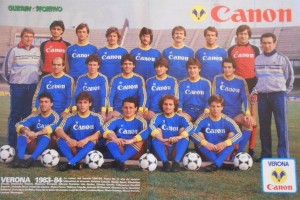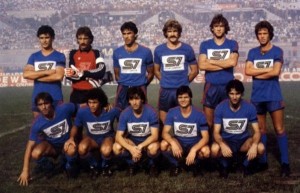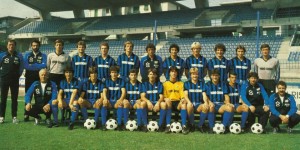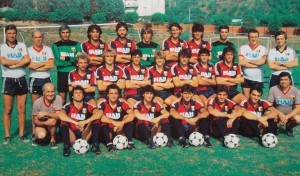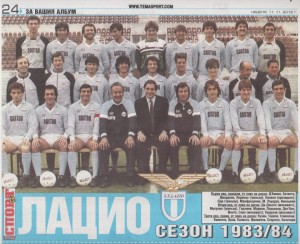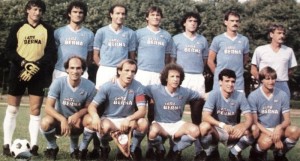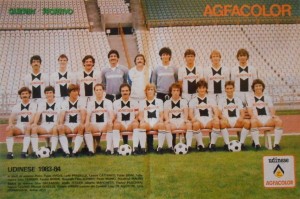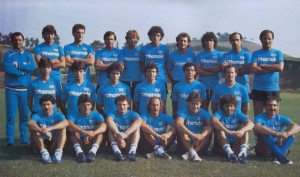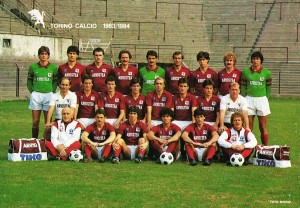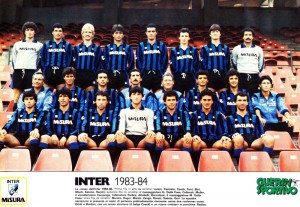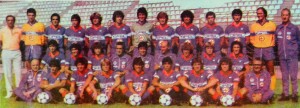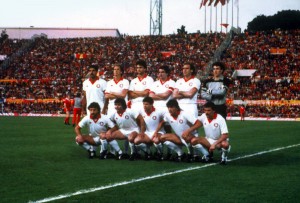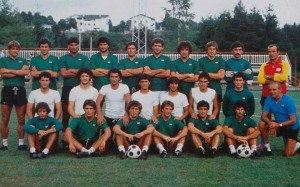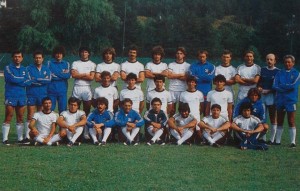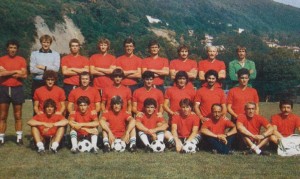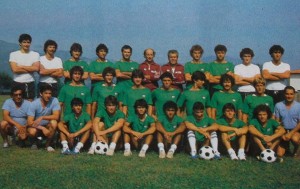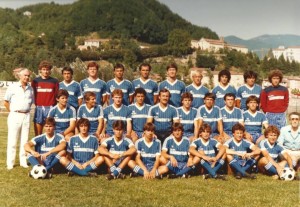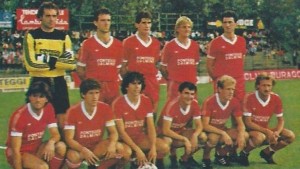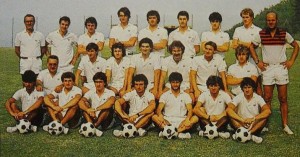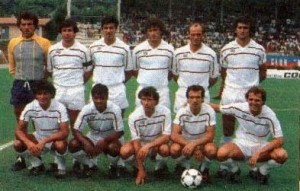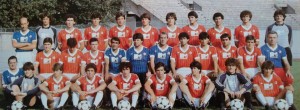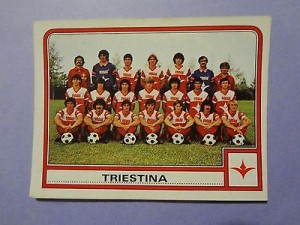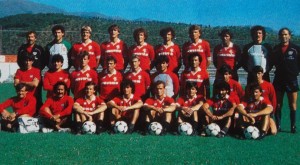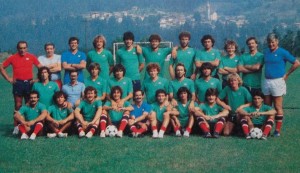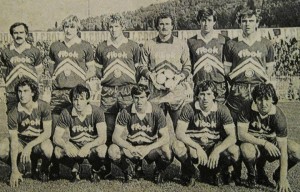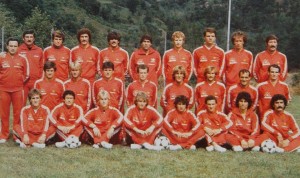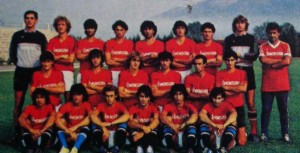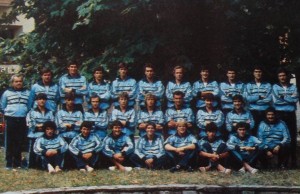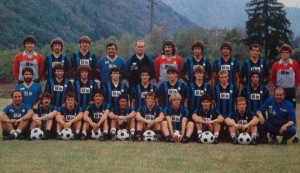Second Division – 2. Bundesliga. 20 teams, 4 going down, 2 directly going up, and the 3rd placed going to promotion/relegation play-off against the 16th in the Bundesliga. As the season went, there was one outsider and two favourites. Some clubs were settling in rather weak positions, apparently for long time to come. One decline was huge and the club somehow never find a way out. The candidates for promotion were quite expected, though – they have been Bundesliga members for many years, two of them played in the very first year of Bundesliga.

BV 08 Luttringhausen was unable to make a miracle – they were the outsider, last with 18 points.
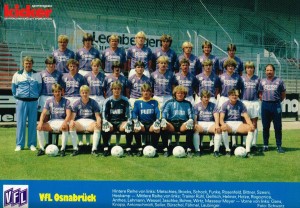
VfL Osnabruck – 19th with 29 points. A losers of dramatic battle between 7 clubs for survival.
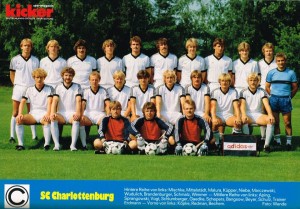
Same fate for SC Charlottenburg – 18th with 29 points.

Rot-Weiss (Essen) was the 4th relegated this season – 17th with 29 points. After 1975 the club went into decline, steadily sinking further and further down – relegated from 1st Division, now from the 2nd Division. And, to this very day, there is no coming back.
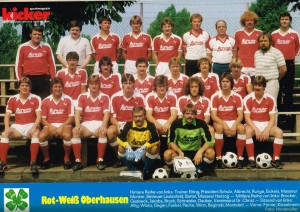
Rot-Weiss (Oberhausen) survived – 16th with 31 points. It was almost entirely home effort – only two teams had worse away record than RW.
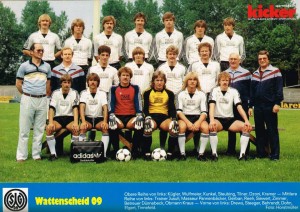
There was time when Wattenscheid 09 played in the top league, but right now it was all about survival in the second division. A huge relief at the end of the championship – 15th with 32 points. They were one of the teams having quite famous name, but it was past glory at best – the Yugoslav defender Dzoni was old and not exactly in the news for many years.
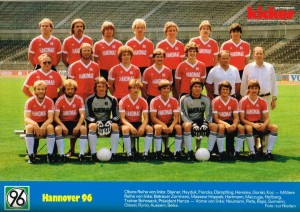
Hannover 96 – a weak season, but their ups and downs were well known. However, that low in second division, merely trying to escape relegation… that was quite bad. 14th with 32 points.
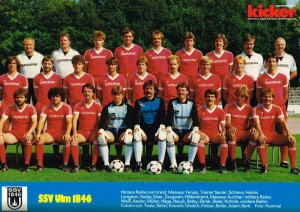
SSV Ulm 1846 were in their expected part of the table – escaped relegation and that was pretty much the most they could do. 13th with 32 points.

Darmstadt 98 – not their year, but at least not in particular danger: 12th with 35 points.

Hertha BSC – 11th with 37 points. Looked like Hertha was settling for mid-table second division club. It was strange, but West Berlin for some reason was unable to make strong and leading club. And still is – Hertha had occasional strong spells, but normally was nothing special. Still, their current situation was particularly low – seemingly, top league was no longer an option for the club. Rainer Bonhof, even no longer the great player he was only a few years earlier, was probably quite unhappy.
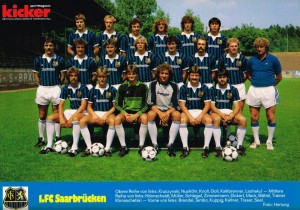
1.FC Saarbrucken – 10th with 38 points.
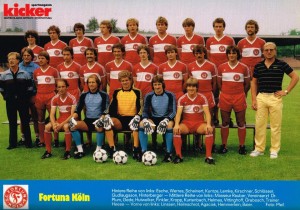
Fortuna (Koln) – 9th with 38 points. Expected – mid-table was the zone of clubs like Fortuna, which established themselves as firm second-division clubs. Solid enough to stay in the middle – no going up, no going down. The typical second-division clubs.
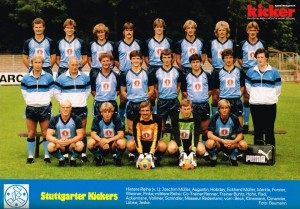
Stuttgarter Kickers – like Fortuna (Koln), thus, nearby in the table: 8th with 39 points. Klinsmann was still the young promising player and that was all.
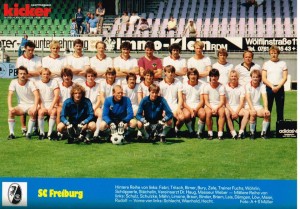
SC Freiburg – one more of the solid second-division constants. 7th with 43 points.

Alemannia (Aachen) – same thing. 6th with 44 points.
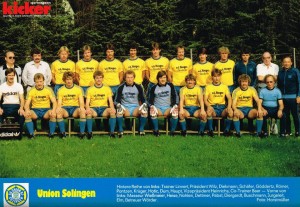
Union (Solingen) – 5th with 44 points. Good season for them and it looked like Union was aiming to join the ‘solid’ clubs as a permanent member of the league. So far, so good.

Hessen (Kassel) – one of the solid members of the league, but this season they were aiming higher, fighting for 3rd place. However, ended 4th with 48 points.
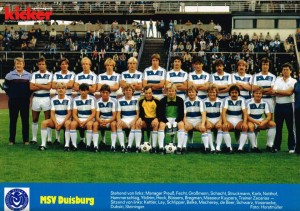
That MSV Duisburg will try to return to the top division was expected, but the team was not so good. So they managed only to clinch 3rd place with 50 points – no direct promotion, but still possible – if winning the promotion/relegation paly-off against the 16th in the Bundesliga.
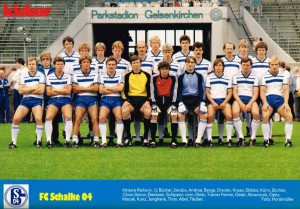
Schalke 04 fought for the 1st place, finished 2nd with 55 points. Measures were taken and the teams was too strong for second level football – but no more than that. It did not look like real rebuilding, but rather patch-up work, just enough to assure promotion. The troubles of Schalke 04 were not over, a lot of word had to be done and quickly too, for this squad most likely was not strong enough to stay in the Bundesliga.
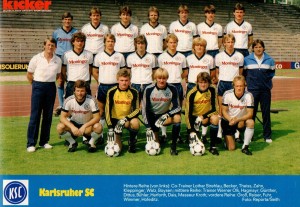
Karlsruher SC won the 2. Bundesliga championship, 2 points ahead of Schalke 04. 25 wins, 7 ties, 6 losses, 94-45 goal-difference, 57 points. Going up again, but was it a team good enough for the highest level? Hard to tell – unlike Schalke 04, there were no famous veterans here. This could be a weakness, but could be also a blessing, for who can guarantee that old players would be able to perform? Good for the champions, but there was also a sense that the club should add a few players in the summer.
After the season was over MSV Duisburg met with Entracht (Frankfurt) in the promotion/relegation play-off. All ended quickly in Duisburg – Eintracht entirely destroyed MSV: 5-0. The second leg was mere protocol – 1-1. Thus, only 2 teams were promoted this year – Karlsruher SC and Schalke 04.
